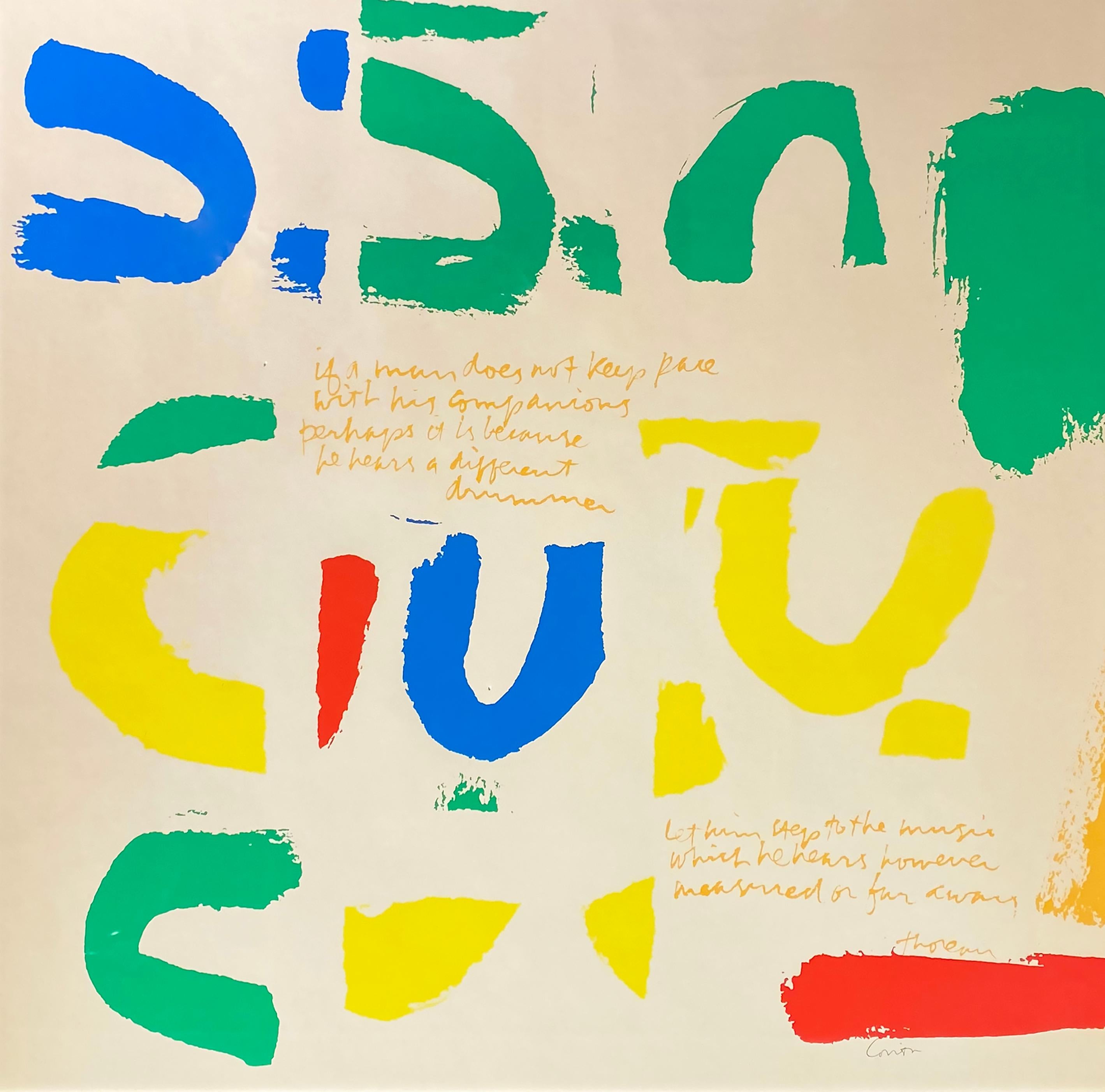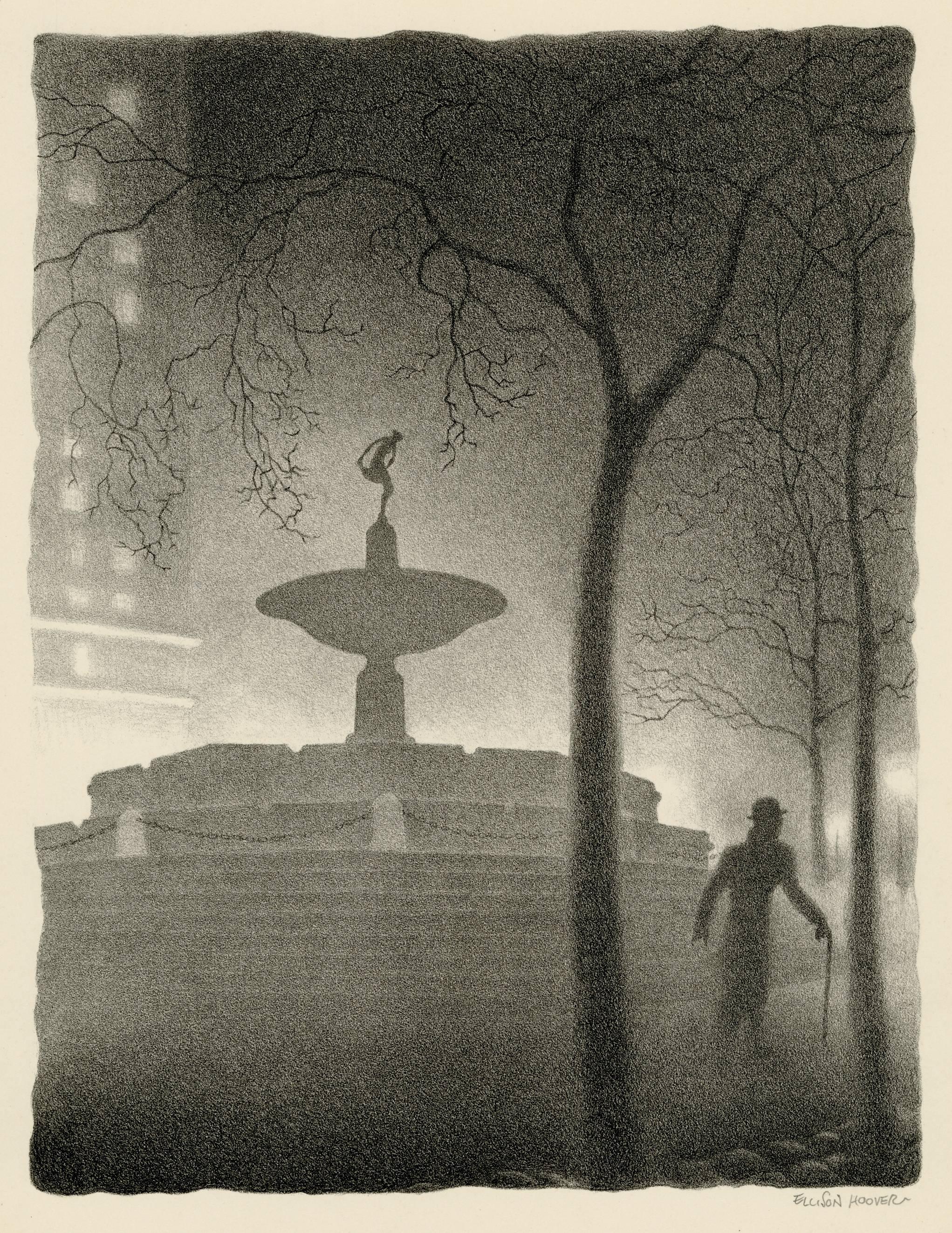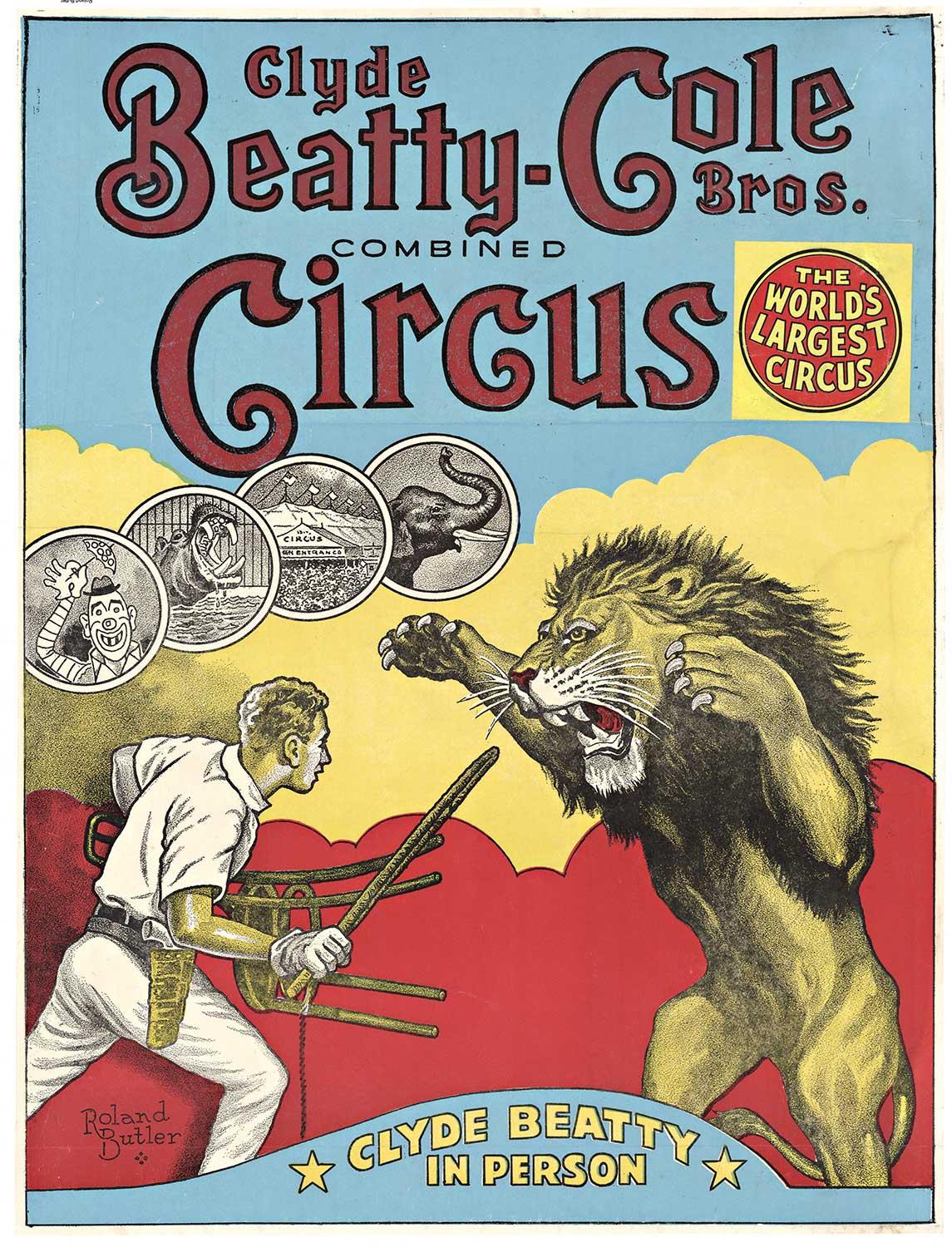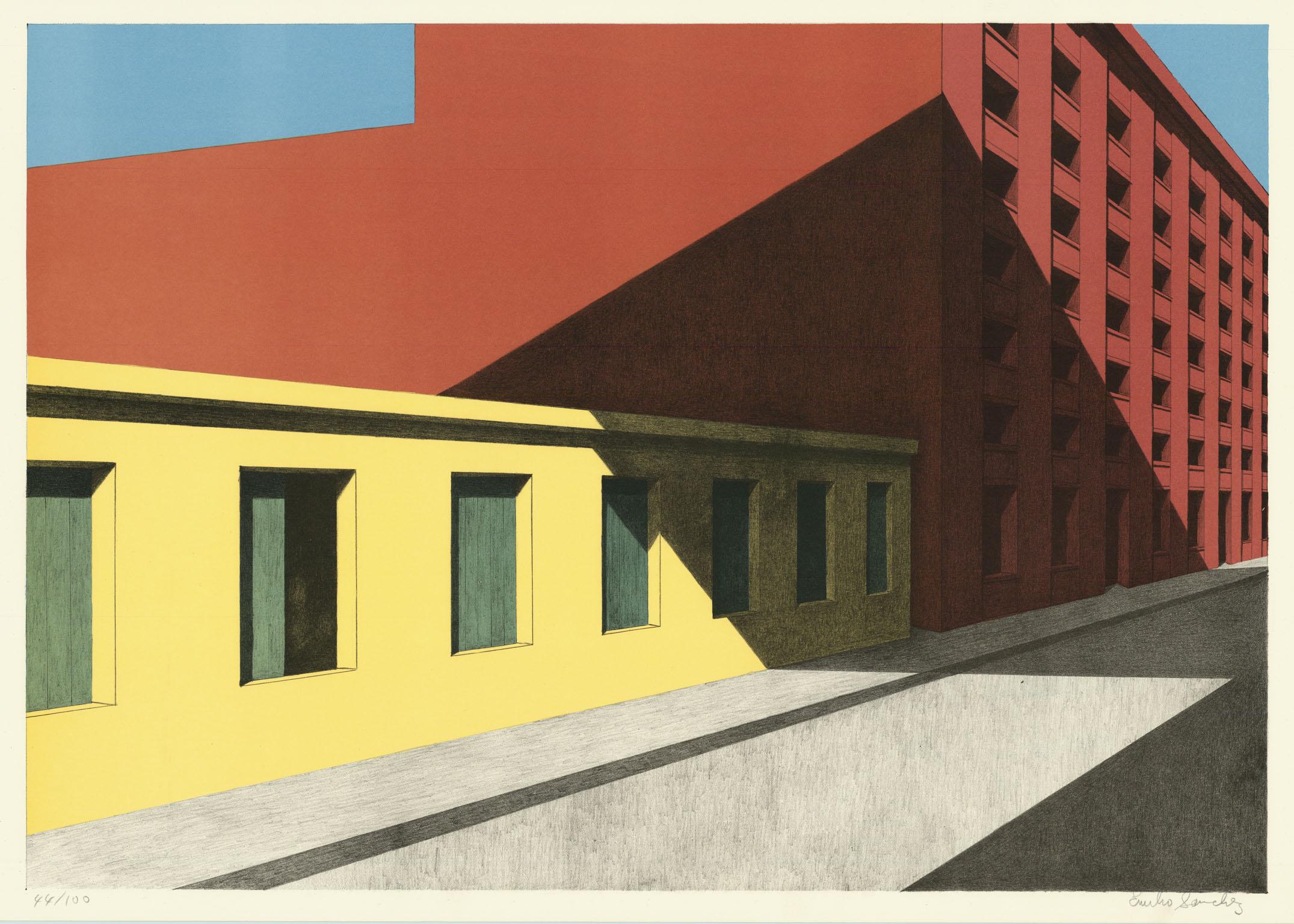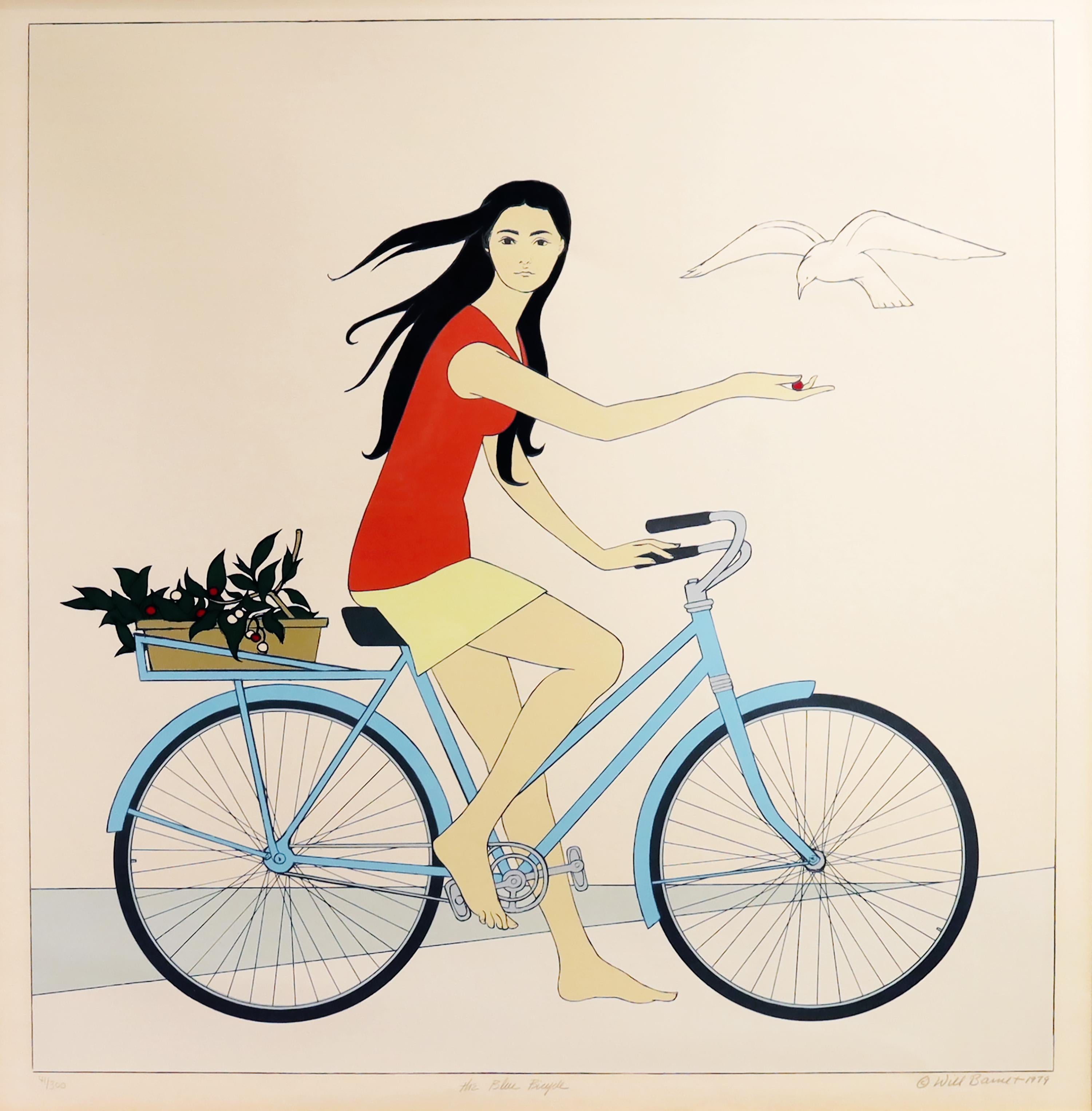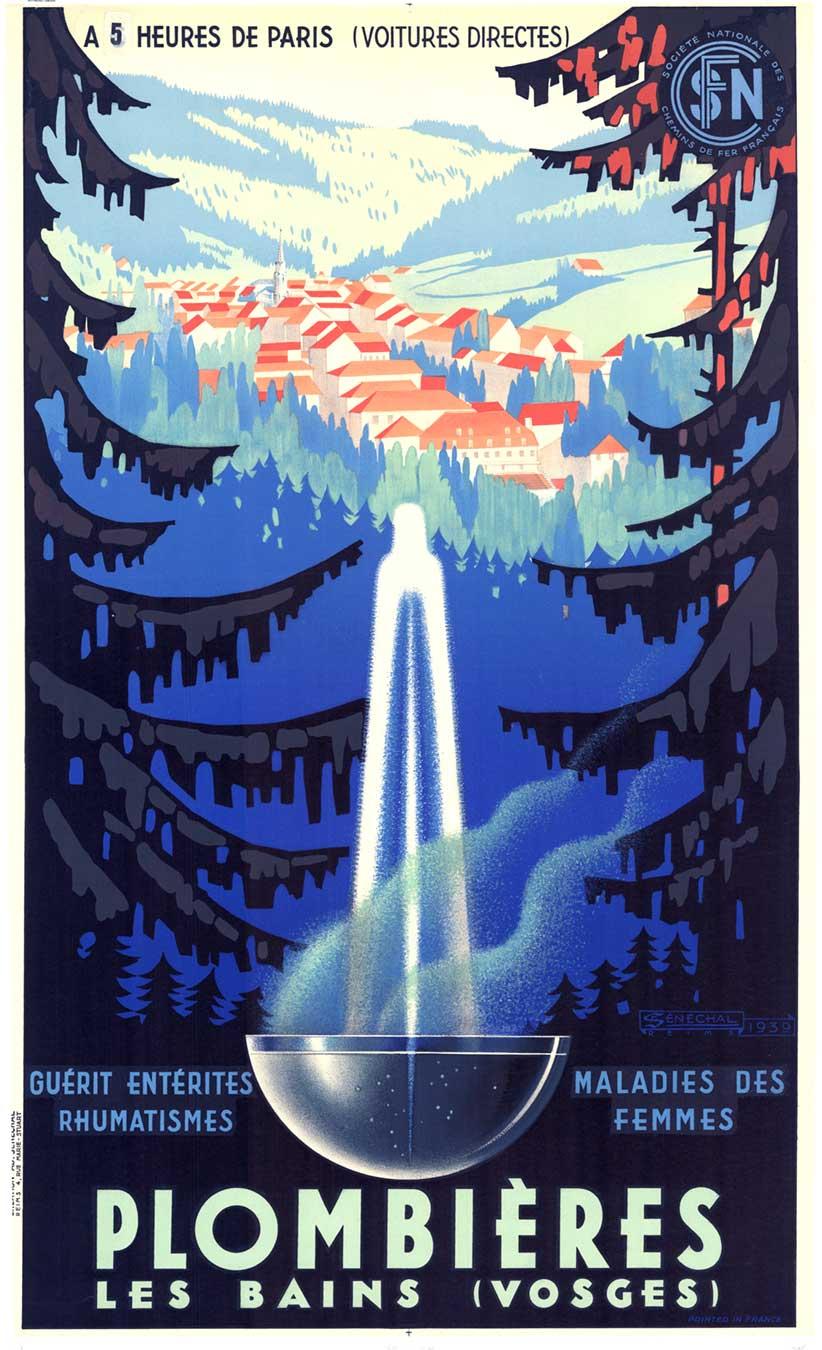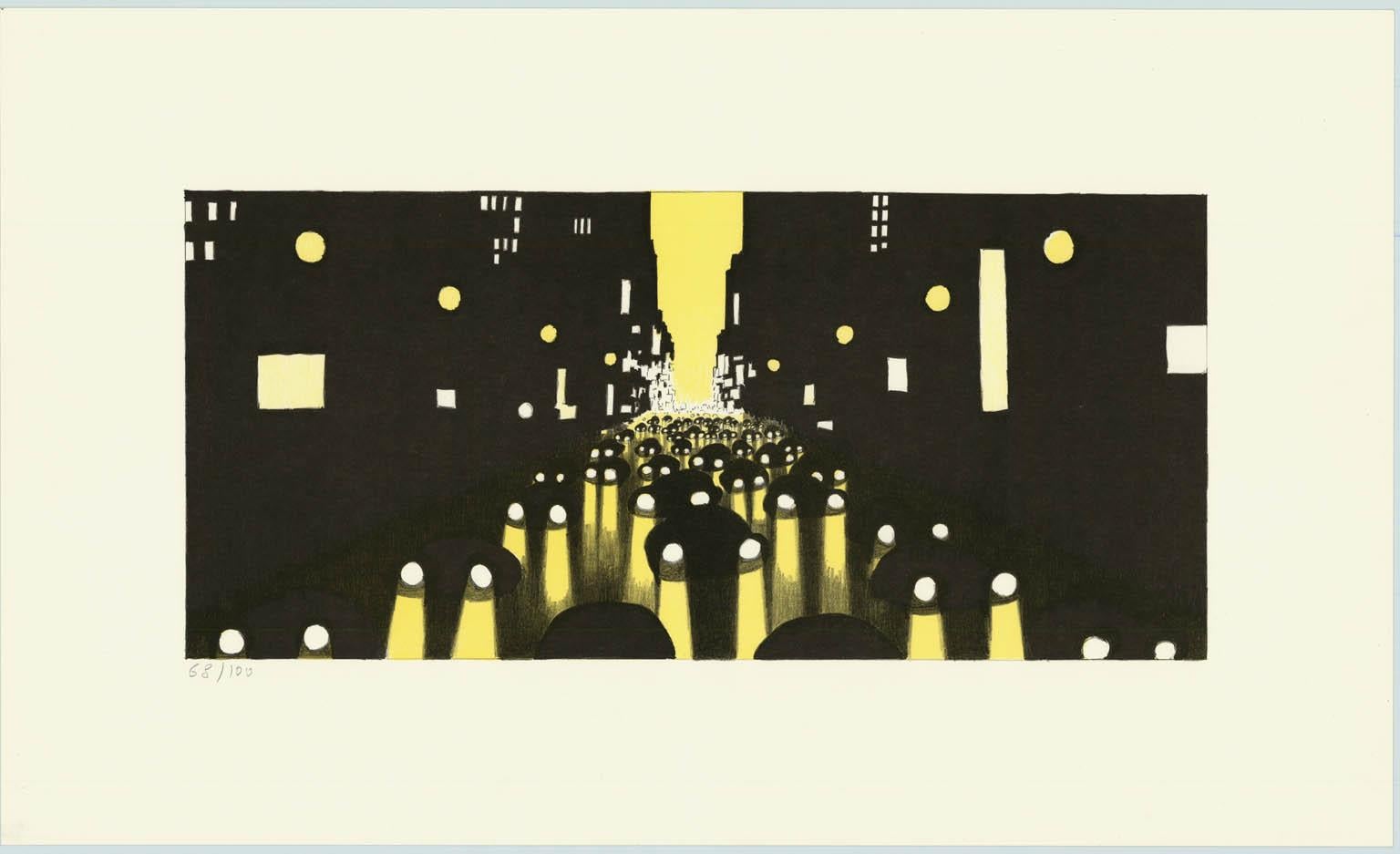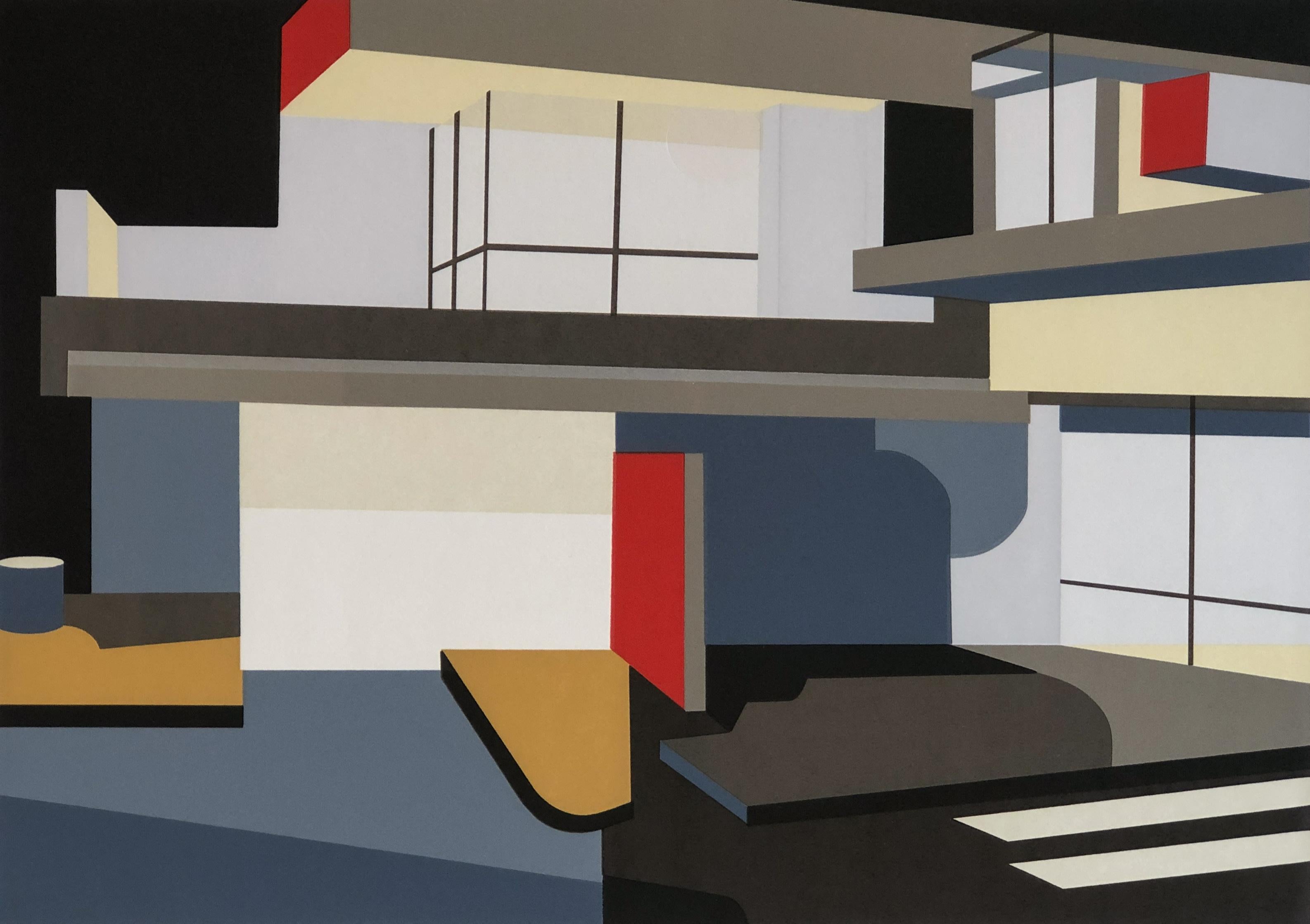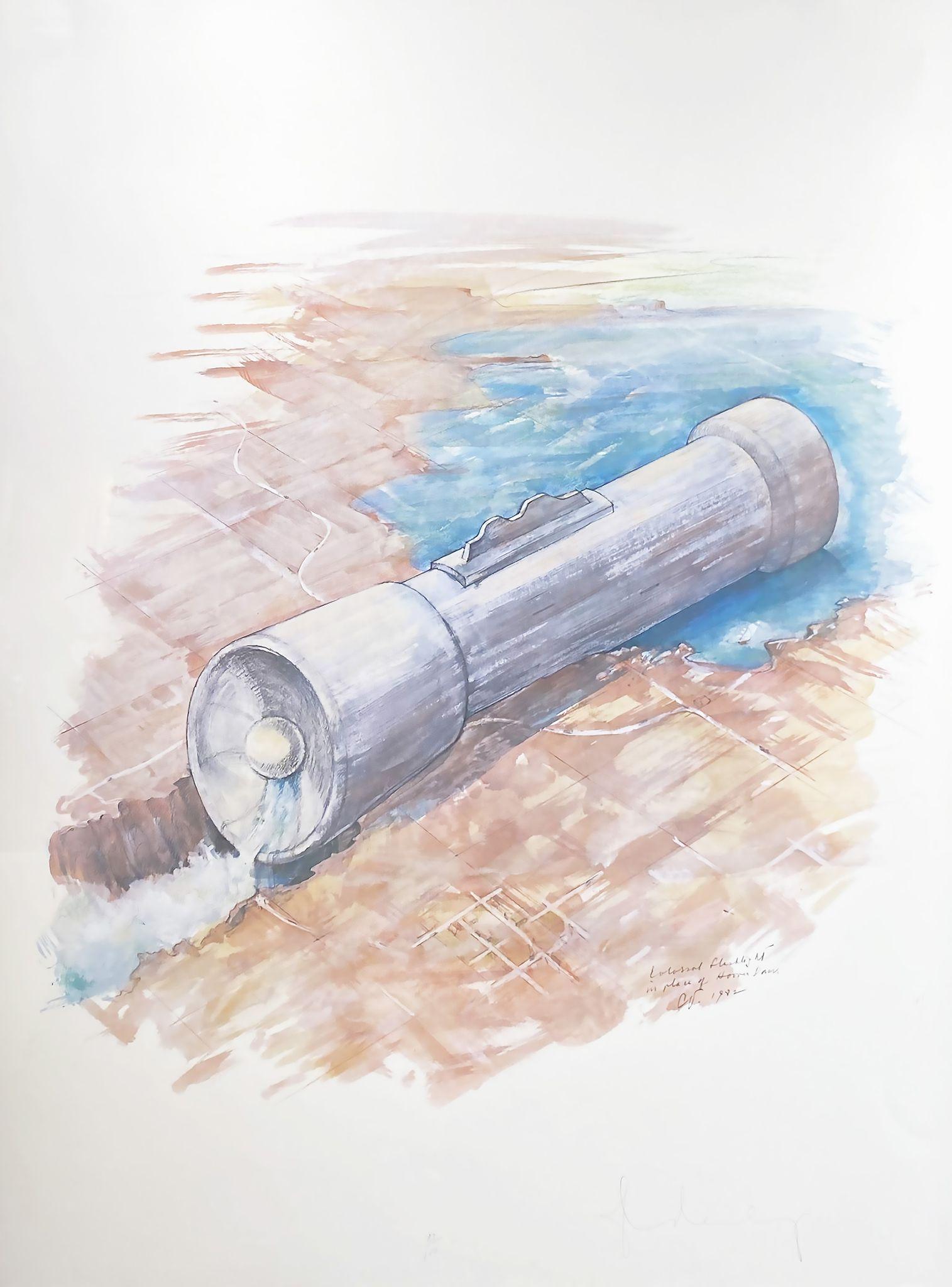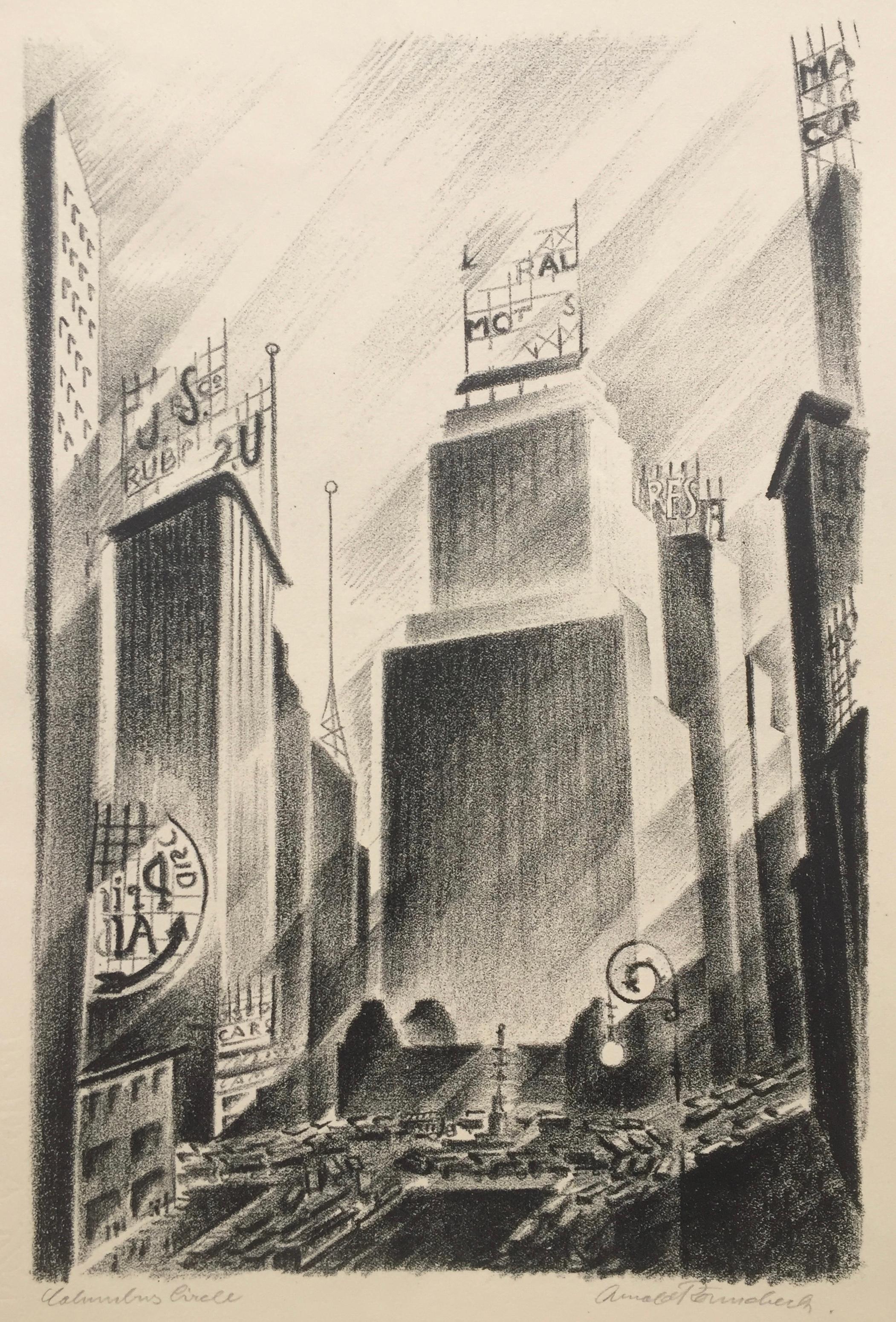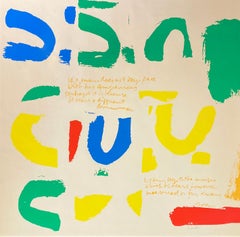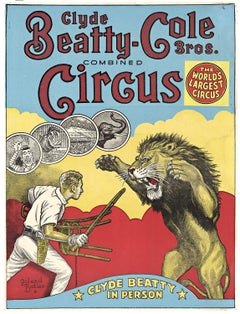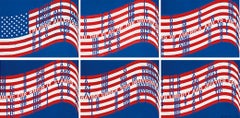
Wav(er)ing Flags (Six Lithographs)
View Similar Items
Want more images or videos?
Request additional images or videos from the seller
1 of 7
Vito AcconciWav(er)ing Flags (Six Lithographs)1990
1990
About the Item
- Creator:Vito Acconci (1940 - 2017, Italian)
- Creation Year:1990
- Dimensions:Height: 19 in (48.26 cm)Width: 25 in (63.5 cm)
- Medium:
- Movement & Style:
- Period:
- Condition:
- Gallery Location:Missouri, MO
- Reference Number:1stDibs: LU74732333311
About the Seller
5.0
Vetted Seller
These experienced sellers undergo a comprehensive evaluation by our team of in-house experts.
Established in 1970
1stDibs seller since 2017
140 sales on 1stDibs
Typical response time: 21 hours
More From This SellerView All
- Leo Baeck "and a Spirit is Characterized"By Corita KentLocated in Missouri, MOLeo Baeck and a Spirit is Characterized Sister Mary Corita Kent (American, 1918-1986) Signed Lower Right in Pencil Edition of 250 Lower center 21.5 x 21.5 inches 24 x 24 inches frame...Category
20th Century American Modern Abstract Prints
MaterialsColor, Lithograph
Price Upon Request - Thoreau "If a Man Does Not Keep Peace"By Corita KentLocated in Missouri, MOThoreau "If a Man Does Not Keep Peace" Sister Mary Corita Kent (American, 1918-1986) Signed in Pencil Lower Right 22.5 x 22.5 inches 23.25 x 23.25 inches with frame Sister Mary Cori...Category
20th Century American Modern Abstract Prints
MaterialsColor, Lithograph
Price Upon Request - Colossal Flashlight in Place of Hoover DamBy Claes OldenburgLocated in Missouri, MOColossal Flashlight in Place of Hoover Dam, 1982 By Claes Oldenburg (Swedish, American, 1929-2022) Signed Lower Right Dated Middle Right Unframed: 23" x 22" Framed: 36.5" x 27.5" Whimsical sculpture of pop culture objects, many of them large and out-of-doors, is the signature work of Swedish-born Claes Oldenburg who became one of America's leading Pop Artists. He was born in Stockholm, Sweden. His father was a diplomat, and during Claes' childhood moved his family from Stockholm to a variety of locations including Chicago where the father was general consul of Sweden and where Oldenburg spent most of his childhood. He attended the Latin School of Chicago, and then Yale University where he studied literature and art history, graduating in 1950, the same year Claes became an American citizen. Returning to Chicago, he enrolled at the Art Institute of Chicago from 1952 to 1954 and also worked as a reporter at the City News Bureau. He opened his own studio, and in 1953, some of his satirical drawings were included in his first group show at the Club St. Elmo, Chicago. He also painted at the Oxbow School of Painting in Michigan. In 1956, he moved to New York where he drew and painted while working as a clerk in the art libraries of Cooper-Union Museum for the Arts of Decoration. Selling his first artworks during this time, he earned 25 dollars for five pieces. Oldenburg became friends with numerous artists including Jim Dine, Red Grooms and Allan Kaprow, who with his "Happenings" was especially influential on Oldenburg's interest in environmental art. Another growing interest was soft sculpture, and in 1957, he created a piece later titled Sausage, a free-hanging woman's stocking stuffed with newspaper. In 1959, he had his first one-man show, held at the Judson Gallery at Washington Square. He exhibited wood and newspaper sculpture and painted papier-mache objects. Some viewers of the exhibit commented how refreshing Oldenburg's pieces were in contrast to the Abstract Expressionism, a style which much dominated the art world. During this time, he was influenced by the whimsical work of French artist, Bernard Buffet, and he experimented with materials and images of the junk-filled streets of New York. In 1960, Oldenburg created his first Pop-Art Environments and Happenings in a mock store full of plaster objects. He also did Performances with a cast of colleagues including artists Lucas Samaras, Tom Wesselman, Carolee Schneemann, Oyvind Fahlstrom and Richard Artschwager, dealer Annina Nosei, critic Barbara Rose, and screenwriter Rudy Wurlitzer. His first wife (1960-1970) Pat Muschinski, who sewed many of his early soft sculptures, was a constant performer in his Happenings. This brash, often humorous, approach to art was at great odds with the prevailing sensibility that, by its nature, art dealt with "profound" expressions or ideas. In December 1961, he rented a store on Manhattan's Lower East Side to house "The Store," a month-long installation he had first presented at the Martha Jackson Gallery in New York. This installation was stocked with sculptures roughly in the form of consumer goods. Oldenburg moved to Los Angeles in 1963 "because it was the most opposite thing to New York I could think of". That same year, he conceived AUT OBO DYS, performed in the parking lot of the American Institute of Aeronautics and Astronautics in December 1963. In 1965 he turned his attention to drawings and projects for imaginary outdoor monuments. Initially these monuments took the form of small collages such as a crayon image of a fat, fuzzy teddy bear looming over the grassy fields of New York's Central Park (1965) and Lipsticks in Piccadilly Circus, London (1966). Oldenburg realized his first outdoor public monument in 1967; Placid Civic Monument took the form of a Conceptual performance/action behind the Metropolitan Museum of Art, New York, with a crew of gravediggers digging a 6-by-3-foot rectangular hole in the ground. Many of Oldenburg's large-scale sculptures of mundane objects elicited public ridicule before being embraced as whimsical, insightful, and fun additions to public outdoor art. From the early 1970s Oldenburg concentrated almost exclusively on public commissions. Between 1969 and 1977 Oldenburg had been in a relationship with Hannah Wilke, feminist artist, but in 1977 he married Coosje van Bruggen, a Dutch-American writer and art historian who became collaborator with him on his artwork. He had met her in 1970, when she curated an exhibition for him at the Stedelijk Museum in Amsterdam. Their first collaboration came when Oldenburg was commissioned to rework Trowel I, a 1971 sculpture of an oversize garden tool, for the grounds of the Kröller-Müller Museum in Otterlo, the Netherlands. Oldenburg has officially signed all the work he has done since 1981 with both his own name and van Bruggen's. In 1988, the two created the iconic Spoonbridge and Cherry sculpture for the Walker Art Center in Minneapolis, Minnesota that remains a staple of the Minneapolis Sculpture Garden as well as a classic image of the city. Typewriter Eraser...Category
20th Century American Modern Abstract Prints
MaterialsPaper, Lithograph
Price Upon Request - The Blue BicycleBy Will BarnetLocated in Missouri, MOThe Blue Bicycle, 1979 Will Barnet (American, 1911-2012) 26 x 25.5 inches 41 x 40 inches with frame Titled Lower Center Signed and Dated Lower Right Edition 41/300 Lower Left From B...Category
1970s American Modern Figurative Prints
MaterialsLithograph
Price Upon Request - Brown CottonwoodLocated in Missouri, MOBrown Cottonwood, 2005 By Andrew Millner (American, b. 1967) Lightjet Print Mounted on UV Plex Signed Lower Right Unframed: 87" x 44" Framed: 88" x 45" Andrew Millner is a visual artist based in St. Louis, MO. His work investigates the relationship between art and nature, the natural and the made. Millner received a BFA from University of Michigan, in Painting and Sculpture. He has had more than 56 group exhibitions since 1987 and over 15 solo exhibitions at institutions including Miller Yezerski Gallery, Boston, Massachusetts; Ellen Miller Gallery, Boston, Massachusetts; CCA, Santa Fe, New Mexico; Tria Gallery, New York City, New York; Richard Levy Gallery, Albuquerque, New Mexico; David Floria Gallery, Aspen, Colorado; Contemporary Museum St. Louis, St. Louis, Missouri. "I started drawing on the computer in 2005. Previous to that, most of my work had been about finding lines in nature; the contours of leaves, the ripples on rivers, the edges of overlapping hills. Although I was using traditional art materials, I prepared the canvases with slicker and slicker surfaces so that the lines wouldn’t soak into the background but sit on top, preserving the nuances of my hand. I thought of the drawings as photographic, in the diaristic sense of recording moments of time. I enjoyed the easy correspondence of the endless novelty of line in these natural forms and the endless variety of line created by my hand. I couldn’t draw the same leaf twice so my subject and process were well matched. I had the idea to draw every leaf of a tree, but I struggled with the scale and complexity of the subject. How does one bring a tree indoors? How can one see the whole tree and its individual parts simultaneously? I tried traditional strategies and materials but the results were unsatisfactory. I wondered if it would be possible to make the drawing on a computer. Since everything… music, photos, movies & books were being digitized, what about drawing? I wasn’t interested in something computer-generated, but sought to “dumb down” the computer and use it as a repository for simple line drawings. In the program I use, Adobe Illustrator, lines are called “paths”… an apt name since the line exists at no set scale or color. Only later do I assign the attributes of color and thickness. Taking my laptop outdoors, I drew my first tree “en plein air.” Using a digital tablet and pen, I drew simple contours of the leaves and branches. Having these drawings remain in digital form rather than in physical form, opened up interesting possibilities and enabled me to tackle the complexity of a tree in intriguing ways. My lines were free and separate from the background and from each other. I drew the branches individually and then later, I could cobble them together to reconstitute the whole tree. On the screen, I could zoom in and out and draw at different scales simultaneously. I could zoom out to draw a simple contour of the entire trunk and then zoom in to draw the smallest leaf with equal effort. I drew in layers so that as the drawings accumulated I could turn layers “off” so that they wouldn’t obscure subsequent layers. These two novelties, drawing at different scales simultaneously and making parts of the drawing invisible to allow for work on top or behind previous drawings, allowed for the accumulation of hundreds of simple outlines to create a dizzying visual complexity. Subsequent trees I drew from photographs. I would take hundreds of close-ups of a tree from a single point of view and then stitch all of these close ups together on the computer. Sometimes I photographed the same tree in the summer and then in the fall after it lost its leaves. This allowed me to see and draw all of the branches and limbs unadorned and unobscured. I would draw the tree twice, with and without leaves, merging the two drawings into one document. In this way, the drawings comprise and compress great spans of looking over vast time frames and seemingly contradictory close-up and distant points of view. My digital drawings have been outputted in different ways… mostly as photographs printed directly from the digital file or as archival inkjet prints. The results defy easy categorization. Are they drawings, prints, or camera-less photographs...Category
21st Century and Contemporary American Modern Still-life Prints
MaterialsPlexiglass, Inkjet
Price Upon Request - Les Grandes Voiles (The Grand Sails)By Marcel MoulyLocated in Missouri, MOHand-Signed by the Artist Lower Right Titled Lower Center Inscribed "Epreuve d'Artist" (Artist's Proof) Lower Left Framed: 25.5 x 32.75 inches Site Size: 19 x 26.5 inches Marcel Mou...Category
Late 20th Century Modern More Prints
MaterialsLithograph
Price Upon Request
You May Also Like
- 'Pulitzer Fountain, Evening" — 1940s American Modernism, New York CityBy Ellison HooverLocated in Myrtle Beach, SCEllison Hoover, 'Pulitzer Fountain, Evening', lithograph, circa 1940, edition c. 40. Signed in pencil. A fine, atmospheric impression, on cream wove paper; the full sheet with margin...Category
Mid-20th Century American Modern Landscape Prints
MaterialsLithograph
$1,760 Sale Price20% Off - Clyde Beatty - Cole Bros. combined Circus original vintage posterLocated in Spokane, WAOriginal circus poster: Clyde Beatty Cole Bros. Combined Circus. Professional linen backed, ready to frame. Artist: Roland Butler. The Lion Tamer is ...Category
1950s American Modern Animal Prints
MaterialsLithograph
- Shadow of the Brooklyn Bridge.By Emilio SanchezLocated in New York, NY“THE SHADOW OF THE BROOKLYN BRIDGE” Emilio Sanchez (1921-1999) created this color lithograph entitled “Shadow of the Brooklyn Bridge” in 1988. The image size is 21.38 x 30.50 inche...Category
Late 20th Century American Modern Landscape Prints
MaterialsLithograph
- La Casa ViviendaBy Emilio SanchezLocated in New York, NY“LA CASA VIVENDA” Emilio Sanchez (1921-1999) created this color lithograph entitled “La Casa Vivenda” circa 1991. Image size 18.38 x 25 inches and the paper size 21.75 x 29.38 inches. Printed in an edition of 100 this impression is inscribed “70/100” - the 70th impression of 100. This impression is pencil signed in the lower right and inscribed in the lower left. “Best known for his architectural paintings and lithographs, Emilio Sanchez (1921-1999) explored the effects of light and shadow to emphasize the abstract geometry of his subjects. His artwork encompasses his Cuban heritage...Category
1990s American Modern Landscape Prints
MaterialsLithograph
- Origiinal 1939 "Plombieres Les Bains (Vosges)" vintage French spa posterBy Adrien SénéchalLocated in Spokane, WAPlombiers Les Bains (Bosges . Original vintage French travel poster: Artist: Adrien Senechal. Travel from Paris in 5 Hours. Note ...Category
1930s American Modern Landscape Prints
MaterialsLithograph
- Crosstown TrafficBy Emilio SanchezLocated in New York, NY“Crosstown Traffic” is a color lithograph by Emilio Sanchez. Created in 1998, this impression is unsigned and came to us directly from the Emilio Sanchez Estate (circular estate stam...Category
Late 20th Century American Modern More Prints
MaterialsLithograph

